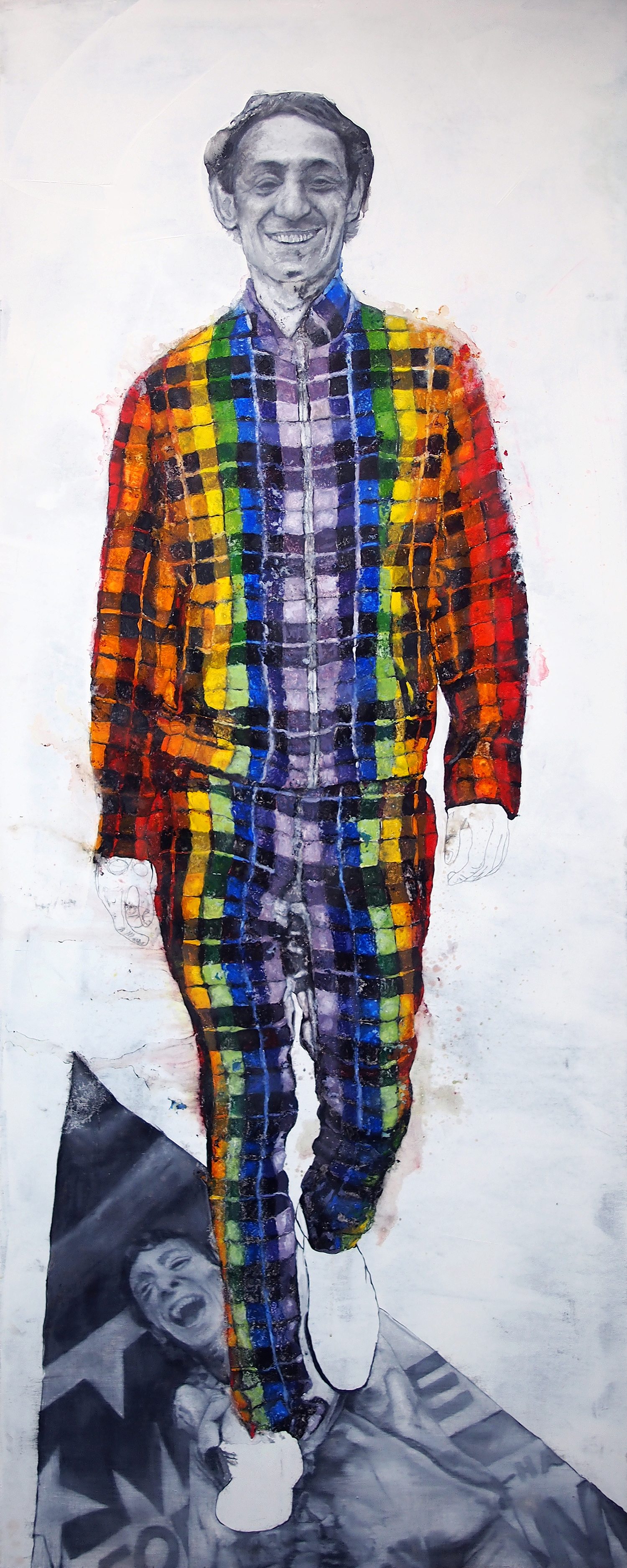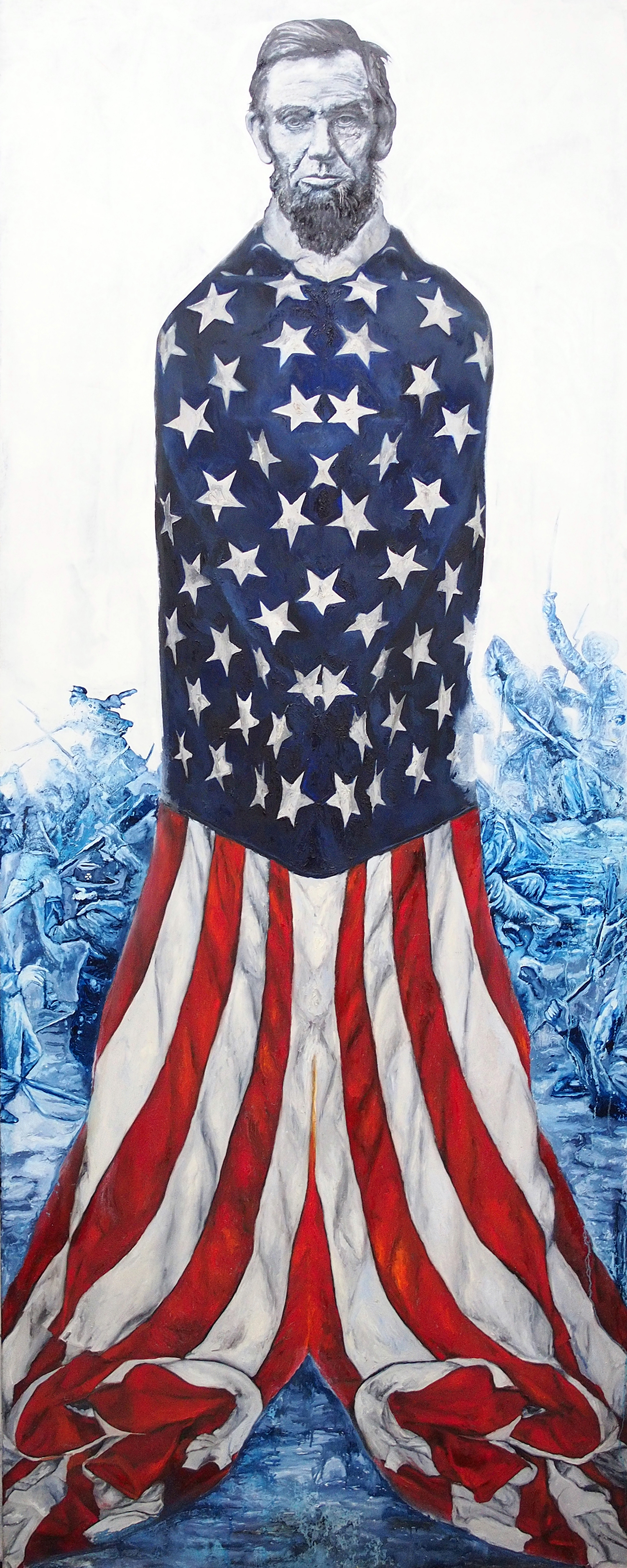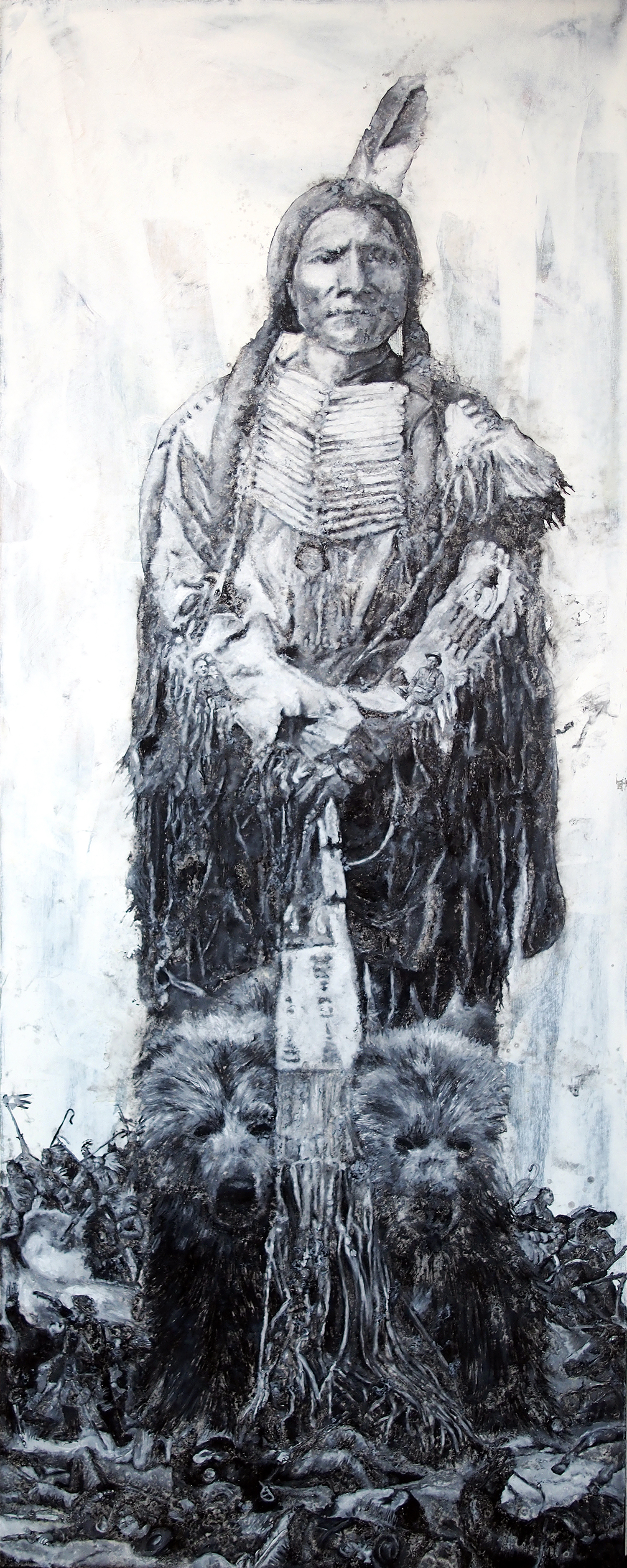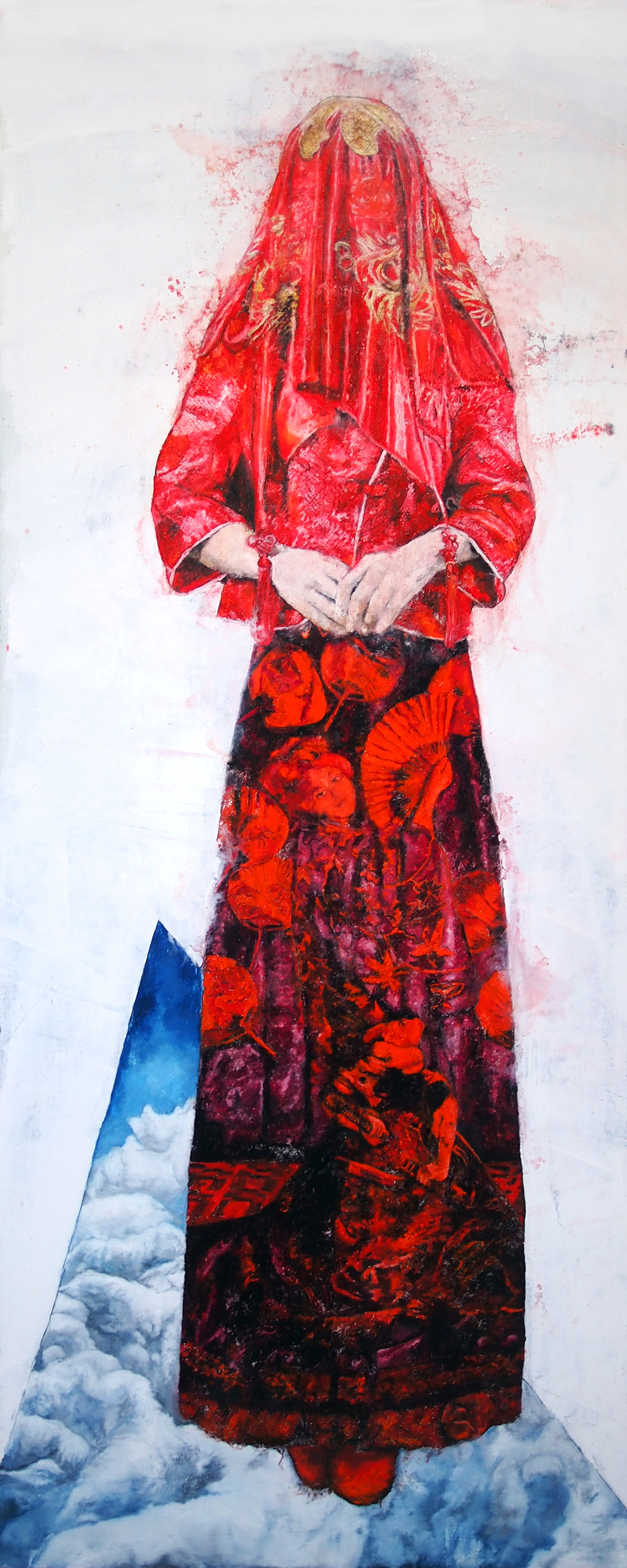Who Are the Great Americans? Paintings by Lahav ’00 Spark Conversations
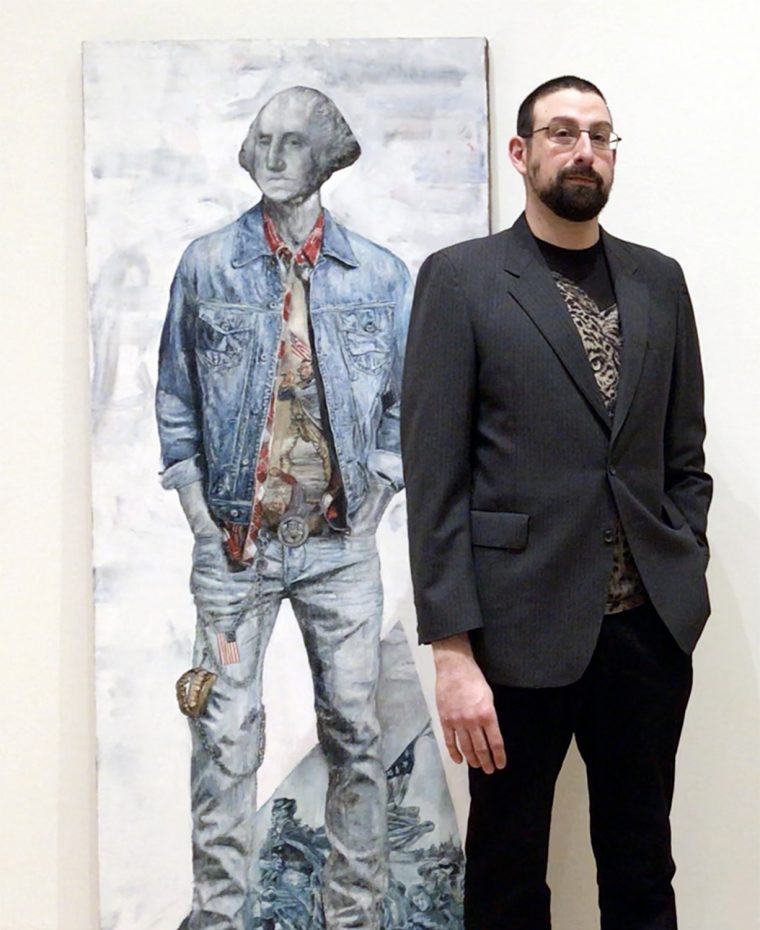
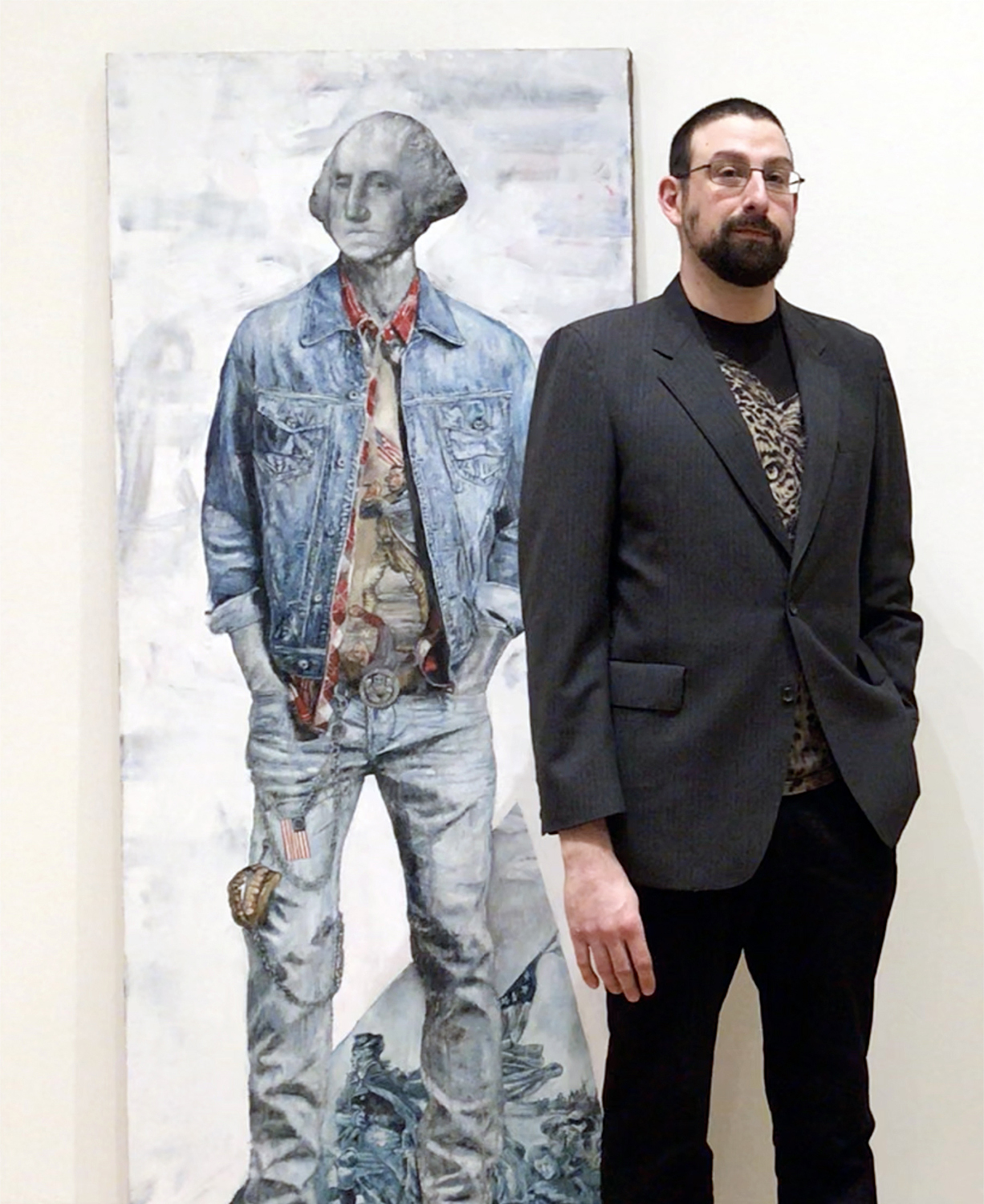
The paintings: Oprah is elegantly coiffed, gowned in a long blue dress, into which a portrait of her in The Immortal Life of Henrietta Lacks has been etched. Lincoln, his sad visage rising above the American flag that envelops him, stands in front of a reproduction of a painting by Henry Ogden, “The Battle of Spotsylvania.” Afong Moy, the first woman from China to arrive in the United States, is clad in a culturally traditional red wedding dress, hands primly—or nervously?—clasped at her waist; her head entirely concealed by a veil. We’ll never see her face—which the artist hopes might prod us to consider: Would we have remembered it anyway?
These are just three from The Great Americans, a show by artist Jac Lahav ’00, on exhibit at the Florence Griswold Museum in Lyme, Conn., until May 12. The work is attracting interest from both critics and schoolchildren alike, sparking dialogues among patrons responding to an implicit question behind the title: What makes someone “great”? Do the Americans shown here fit these criteria?
While he was still in grad school, that question was the starting point for Lahav. He’d been watching a Discovery Channel miniseries, Greatest American, and his attention was captured by the debates that arose around naming a top-10 group. George Washington and Abraham Lincoln easily made the list. But the audience was divided between Jonas Salk or Oprah Winfrey, illustrating the difficulty: What is the definition of “great.” While Salk is the creator of the polio vaccine and might initially be a shoo-in, his legacy is more complicated, notes Lahav: His vaccine is no longer the one in use today, and his collaborators felt that Salk had ignored their contributions in favor of personal celebrity.
And while Oprah Winfrey at first glance might be dismissed as a mere celebrity talk show host, through her foundation she has made significant social contributions.“When you examine any individual’s life, it’s a lot more complicated than what you see on the surface,” he says.
Lahav aims for his Great American portraits to encompass both an easily recognizable face or obvious details, as well as some stories that are hidden below what one might find on the first page of a Google search—which is where he begins his research on his subjects. Additionally, he queries whether fame is a necessary prerequisite of “greatness” and adds what he calls “smaller stories,” those whose lives made an impact although they are not widely known, such as Moy.
The result: For the schoolchildren, each painting offers a small course in American history. They see George Washington’s face, even though he’s clad incongruously in a jean jacket, but with false teeth and an American flag attached to a chain. The Rev. Dr. Martin Luther King, Jr. sports a t-shirt emblazoned with the mug shot from his arrest. The number 68—the year of his death—is a tattoo.
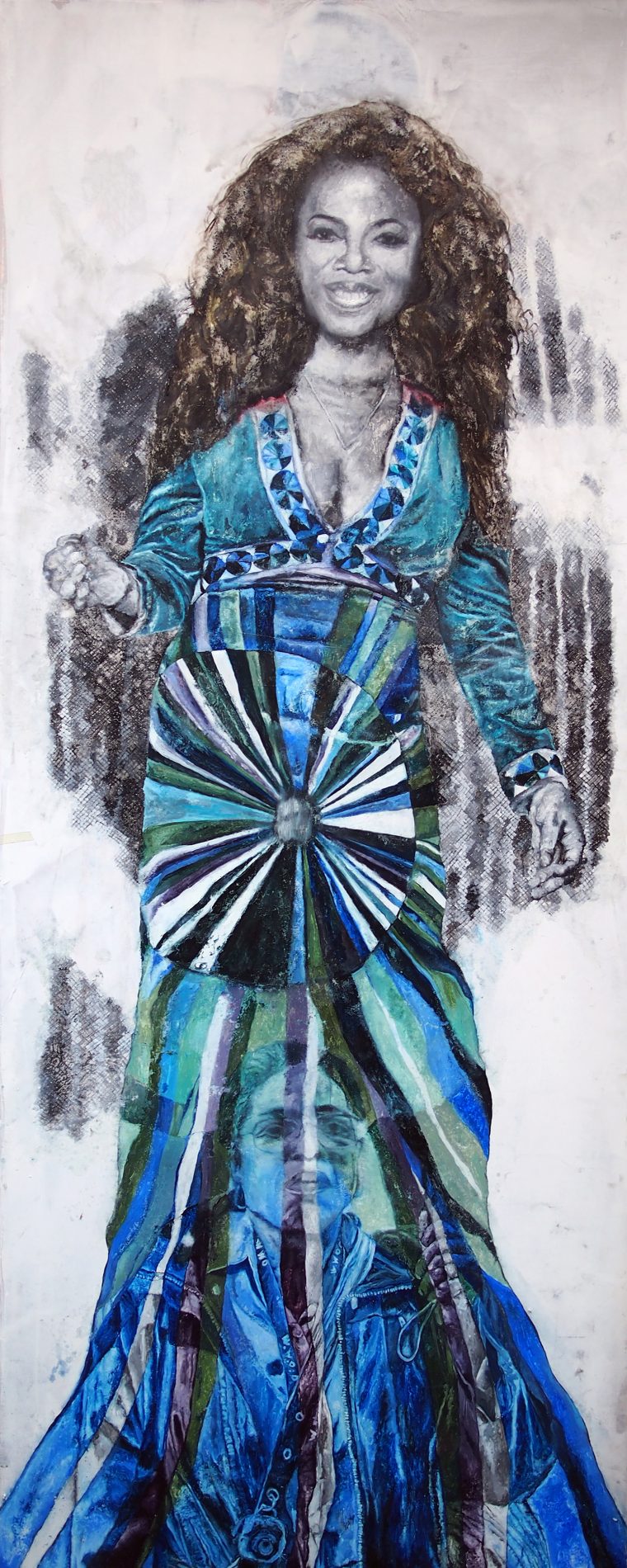
To adults, however, the paintings are an almost dreamlike, Jungian exploration of the culture and times the individuals inhabited or still inhabit. The Reagans, Nancy and Ronald, pose together, painted with blurred lines, as though fading from memory, their clothing covered in Star Wars motifs—Chewbacca and Han Solo—a play on the space/defense initiative of Reagan’s presidency. Harvey Milk’s suit is the color of the gay pride flag, and he smiles and strides toward the viewer. Oddly, his hands and feet are absent, mere suggestions of shapes.
“I think of these paintings as sort of dreams, and then the analysis comes afterward. Like a dream, each painting exists in its own right as an emotional entity. When you wake up you can analyze a dream, which is a conscious process and very different from the actual dream itself. Like a dream, good artwork should exist on its own. And then we can layer analysis on top of it—but that’s a different thing.
“With a lot of these paintings, I create the artwork but I rely on people to tell me what they see.”
Inherent in the process he describes are his Wesleyan roots. As an undergraduate, he was not a painter but a University major: “Psychology, especially the study of the unconscious, Jungian psychology, with art and religion mixed into that” is how he describes it. He names Associate Professor Emeritus of Religion Jeremy Zwelling as a “great inspiration and mentor,” as well as the late professors Jon Barlow and Joe Reed.
For his part, Zwelling recalls Lahav as “a focused, very bright and disciplined student. His extraordinary paintings capture Jac’s ways of combining the intellectual and the emotional. There is a good deal of ironic playfulness in the man and in the art.”
Along with conversations between patrons that he hoped to inspire, Lahav has found himself included in the dialogues in ways that have helped shape the collection. “The last show that I had was in Longview, Texas, and a little boy asked, ‘Where are all of the Native Americans?’” Realizing that he’d neglected to include a Native American, he chose Crazy Horse—which was not without its ironic elements.
“Crazy Horse never let anyone take his picture, so if you Google ‘Crazy Horse’ the first picture that comes up is of Charging Bear, misattributed as Crazy Horse. I think it’s interesting how we can misattribute some people. This is also part of the conversation around the painting of Afong Moy—a Chinese American who deserves a greater space than she has been given.”
And more additions are upcoming: “I have a Fredrick Douglass I really want to do. The Einstein sold, so I have to do a new one of those. Normally if one sells, I replenish the series—and then there’s just a totally new version. I have a lot more Hispanic-Americans I want to put in. I have a list a mile long.”
Gazing around at the collection, a viewer can’t help but wonder if Lahav has one painting that is closest to his heart. But no.
“You can’t have a favorite,” Lahav says. “I love them all for different reasons. If we take the analogy of children—some of them are in their teens and they’re giving me more trouble than others. I’m also growing and coming to understand some of them in different ways.
“I think the great joy in art can be to communicate with an audience and to spark more conversations.”
The images below are courtesy of Jac Lahav ’00. These portraits and many more from The Great Americans by Lahav are on exhibit at the Florence Griswold Museum until May 12, 2019.
